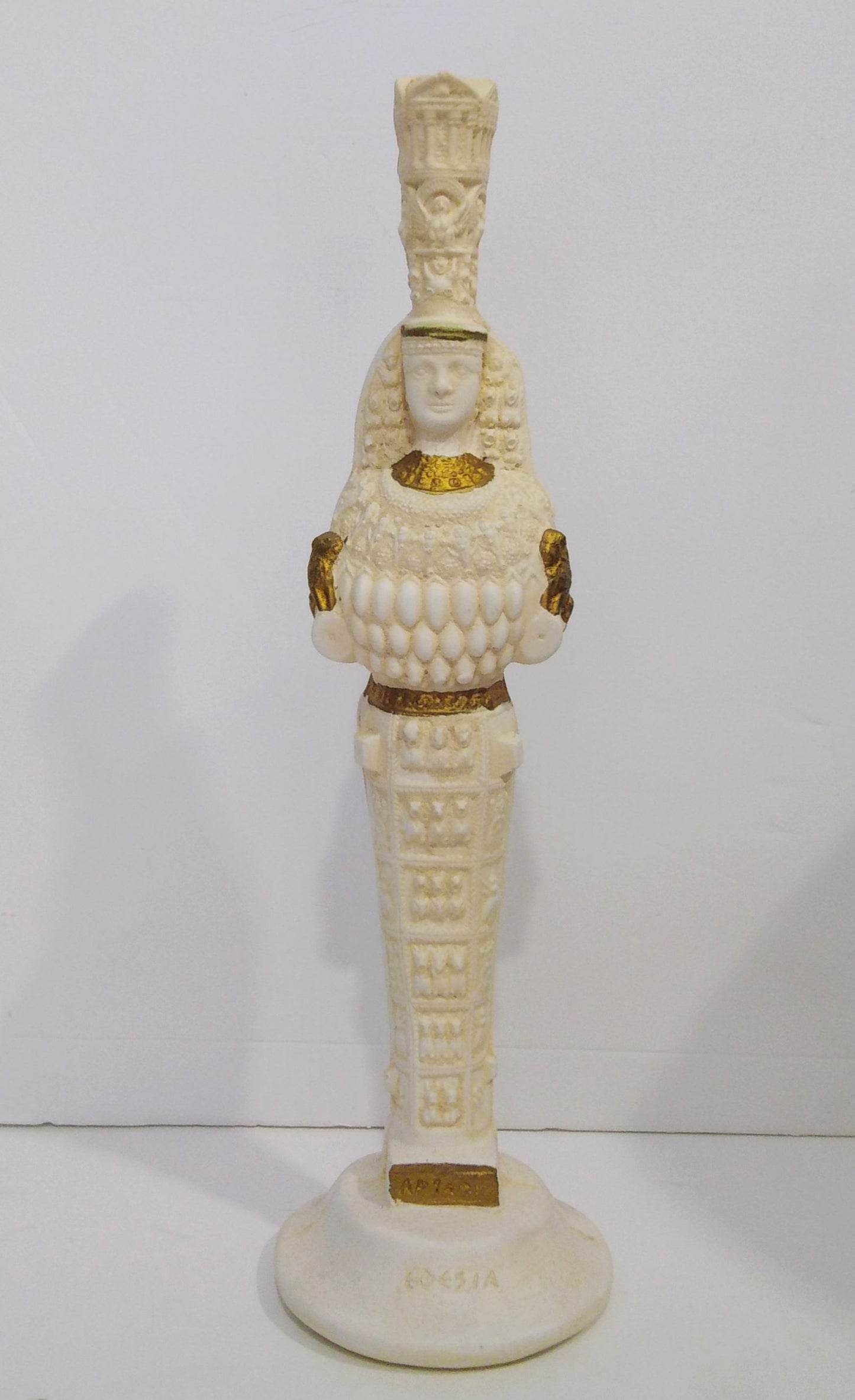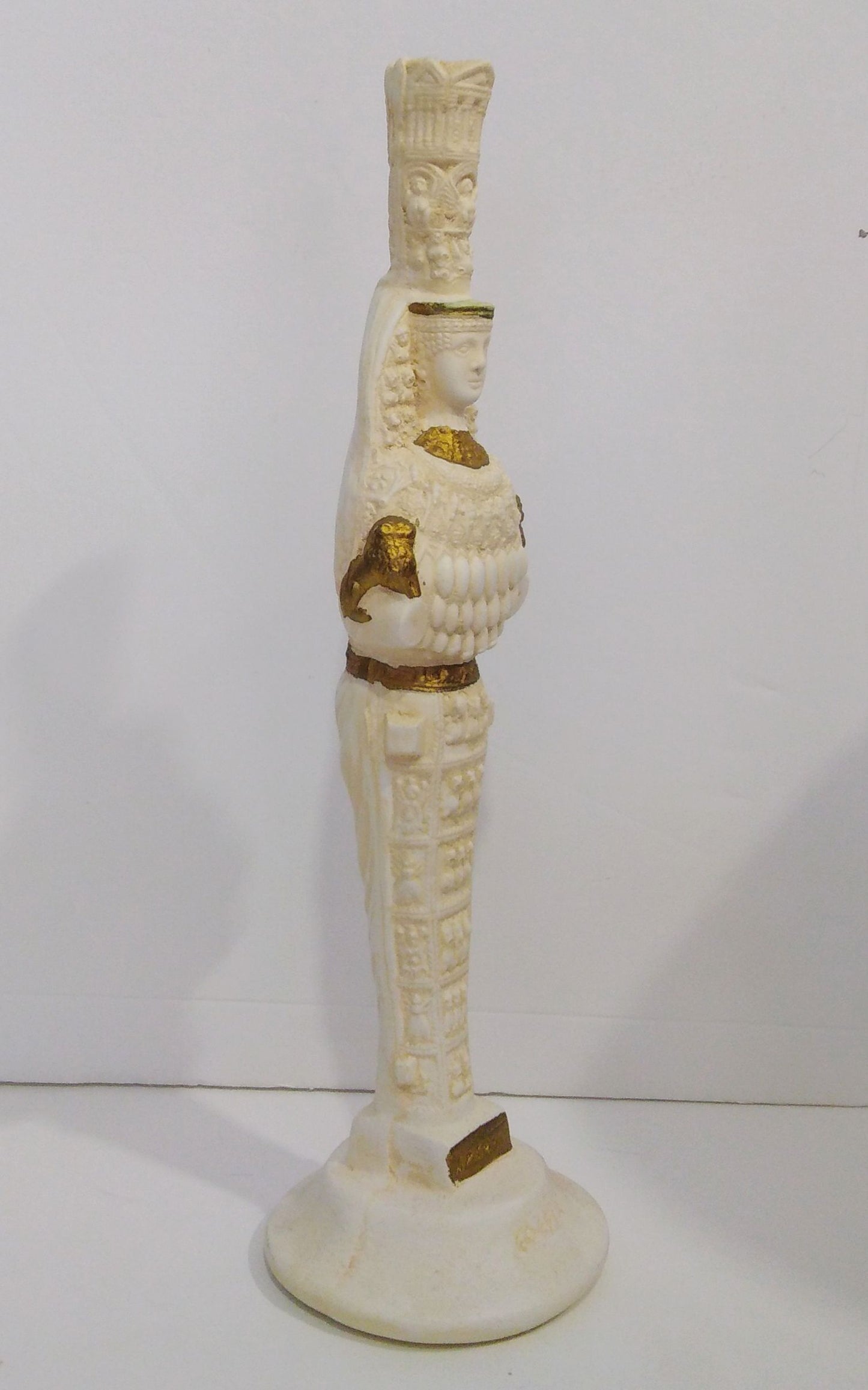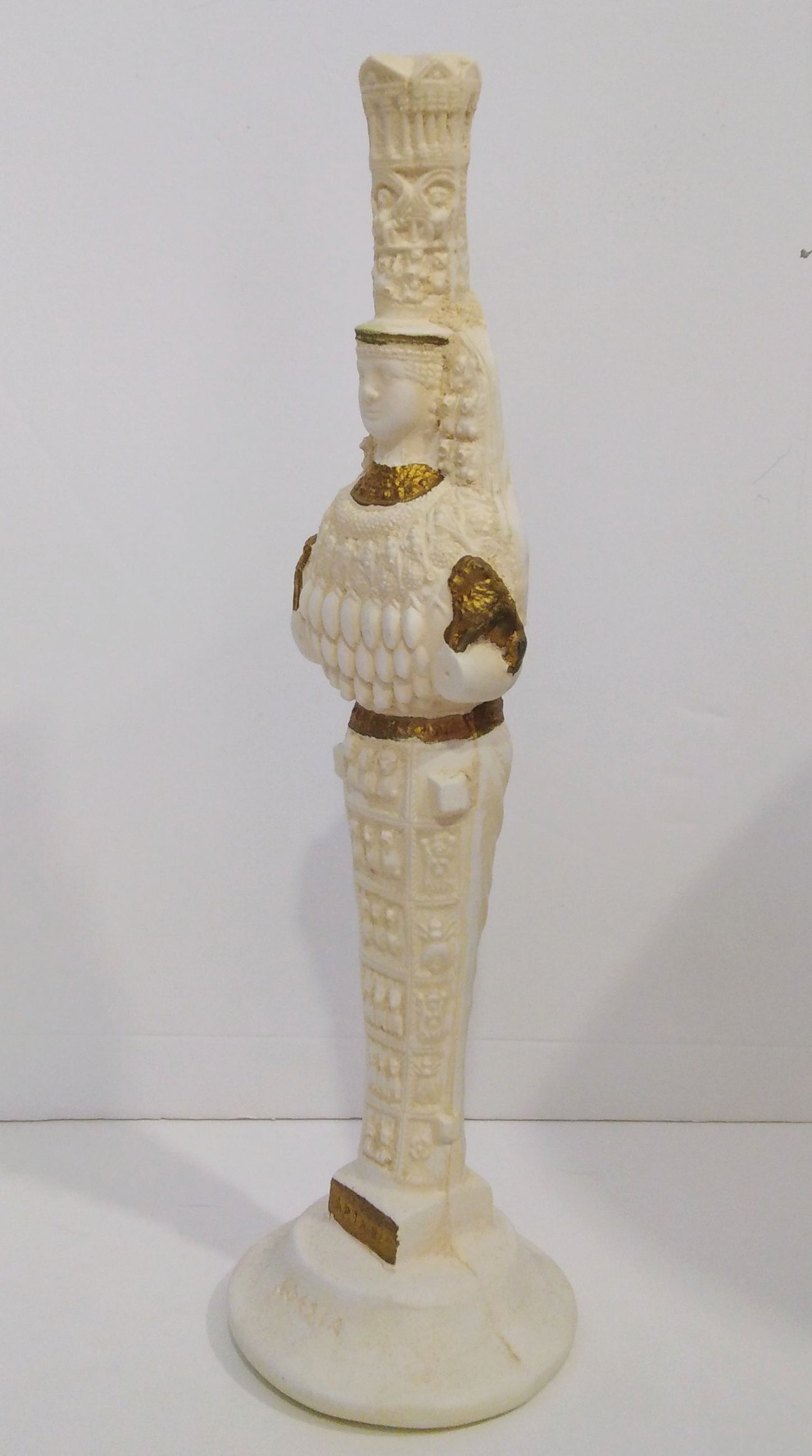Gallery Demeter
Artemis Ephesian - Great Mother Goddess - Fertility Symbol, Protector of the City - museum reproduction - Casting Stone Statue
Artemis Ephesian - Great Mother Goddess - Fertility Symbol, Protector of the City - museum reproduction - Casting Stone Statue
Regular price
€34,90 EUR
Regular price
Sale price
€34,90 EUR
Unit price
per
Tax included.
Shipping calculated at checkout.
Couldn't load pickup availability
Item Specifics
Condition: New, Made in Greece.
Material: casting stone
Height: 24 cm - 9,45 inches
Width: 5,5 cm - 2,16 inches
Length: 7 cm - 2,175 inches
Weight: 250 g
The Ephesian Artemis, the "great mother goddess" also mentioned in the New Testament (Acts 19), was extremely popular in the ancient world, as we might deduce from the fact that copies of her cult statue have been excavated in many parts of the Roman Empire.
The goddess was originally, before her cult was taken over by the Greeks, called "Artimus", and her temple - one of the Seven Wonders of the Ancient World - received gifts from the Lydian king Croesus (c.560-c.547). She is related to other Anatolian mother goddesses, like Cybele. The Ephesians believed that Artemis was born in Ephesus (and not on Delos, as was commonly assumed), and accepted the shrine as an asylum.note. Later, the Persians patronized the cult; the high priest was called the "Megabyxus", a Persian name that means "the one set free for the cult of the divinity". The original cult statue was made of wood, but was probably lost after the great fire of 356 BCE.
Although the statue as we know it was a substitute for the lost original, it retains several archaic traits (e.g., her static pose). Still, many aspects cannot be dated in the archaic age, and the statue from Lepcis that is next to this article illustrates this very well: on the upper part of her chest, she wears a zodiac, a symbol invented in fourth-century Babylonia. On other copies, Artemis wears a mural crown, a Mesopotamian and Syrian motif that became popular in the Hellenistic age. The winged Victories to the left and right appear to be innovations as well, although they have archaic antecedents.
On other copies, these elements are absent (e.g., instead of the Victories, we see lions), and they may be closer representations of the original. However, the fact that a statue with zodiac had been found in Ephesus, strongly suggests that the astrological aspect was not altogether absent from the Ephesian cult.
One of Artemis' characteristics is that she protects fertility. This may be symbolized by the spherical objects that cover the lower part of her chest, but the common assumption that they are female breasts is incorrect. They probably represent the testicles of a bull, although they may also be gourds, which were known in Asia as fertility symbols for centuries. Artemis' robe is always decorated with lions, leopards, goats, griffins, and bulls, which represent Artemis' title of Lady of the Animals.





